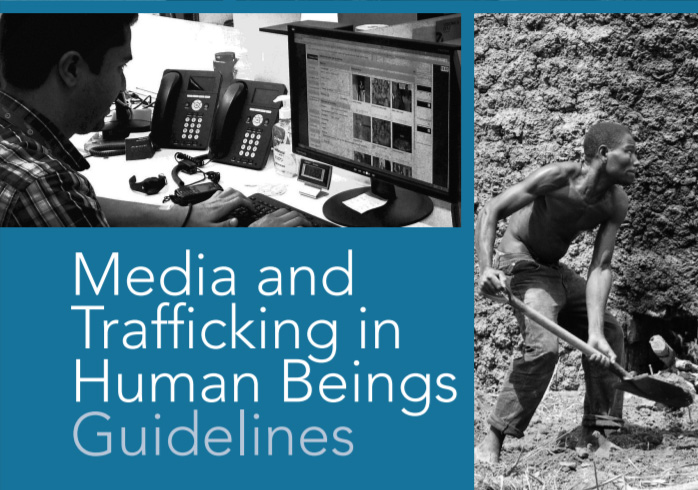“Media and Trafficking in Human Beings: Guidelines”, authored by Aidan White of the Ethical Journalism Network, provides guidelines on how to report on human trafficking. The guidelines “aim to help editors and reporters to better understand the issues and to shape their stories in ways to avoid the dangers lurking in an aggressive and competitive media landscape.”
As explained in the publication, it is of great importance to report the stories of people who are caught in trafficking with great care and sensitivity. Not only because it can do damage, but it can also “incite hatred [and] perpetuate stereotypes. It can create ignorance and misunderstanding, deflecting attention from root causes and obstructing much-needed public debate on how to resolve this crisis.”
“The advice and suggestions set out in these pages can help journalists to think twice about how they report on trafficking; to consider the legal and human rights issues involved; the treatment of the victims, their privacy and welfare; and how to tell the story with humanity and style while helping audi-ences to understand better what must be done.”

This publication is part of the “Fight against Trafficking in Human Beings and Organised Crime – Phase 2” funded by the European Commission, and implemented by the International Centre for Migration Policy Development (ICMPD) in cooperation with Expertise France and FIIAPP. The publication has been produced with the assistance of the European Union.
Media_and_THB_Guidelines_EN_WEB.pdf
Nenad Radoja
Contrary to popular belief, Lorem Ipsum is not simply random text. It has roots in a piece of classical Latin literature from 45 BC, making it over 2000 years old. Richard McClintock, a Latin professor at Hampden-Sydney College in Virginia, looked up one of the more obscure Latin words, consectetur, from a Lorem Ipsum passage, and going through the cites of the word in classical literature, discovered the undoubtable source.